Despite their propaganda boasts and broadcasts, the deteriorating military situation was not lost on the Nazi leaders.
And so it was that on September 25, 1944, Adolf Hitler ordered the establishment of the Volkssturm.
What followed was one of the most bizarre military formations in the history of World War II.
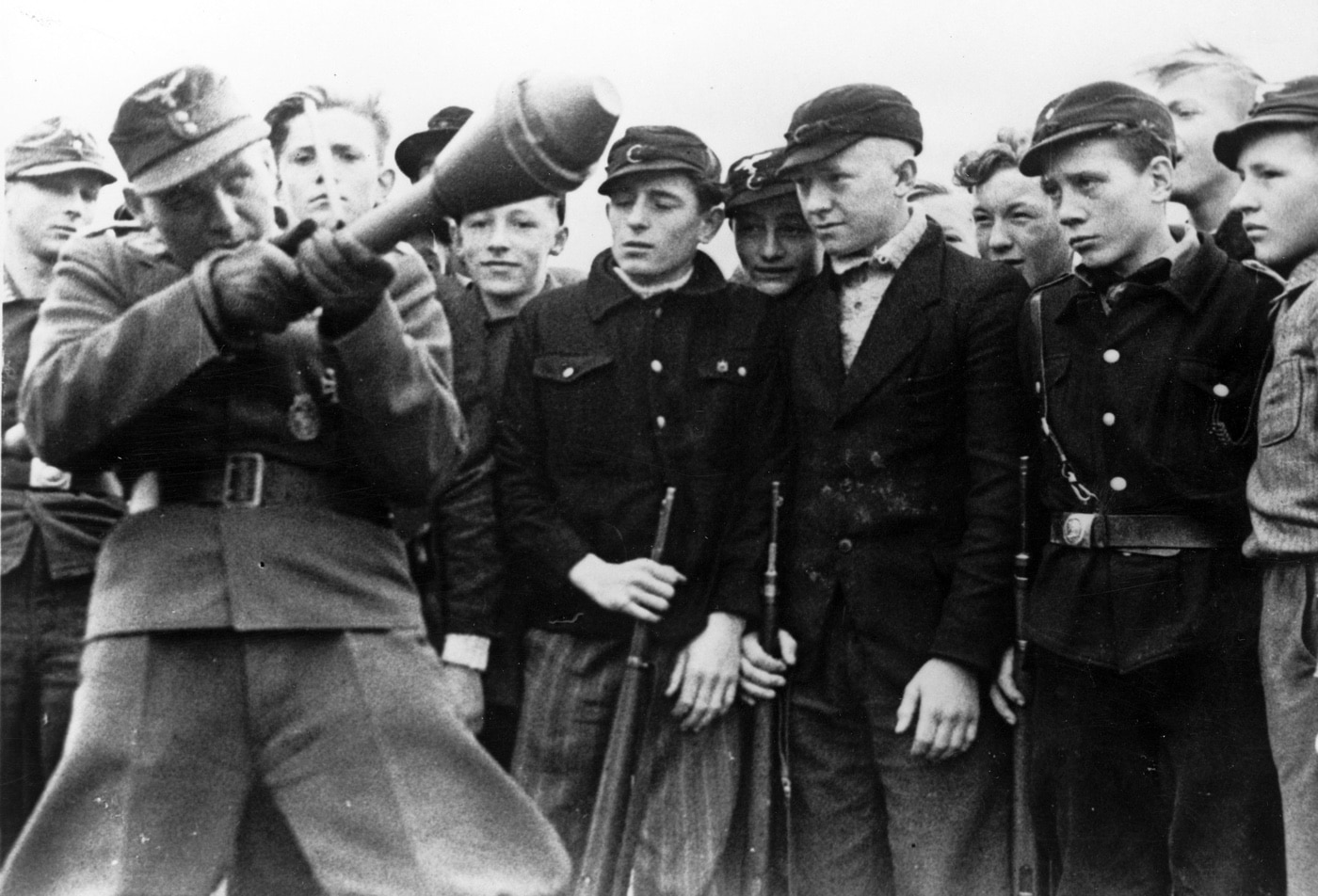
These young members of the Volkssturm learn the basics of the Panzerfaust anti-tank weapon. Image: Polish National Archives
What Was the Volkssturm?
It is recruited under the auspices of the Party, whose formations join in providing its cadres and officers.
Beyond that all installations and institutions of the Party serve to form and train the new units.
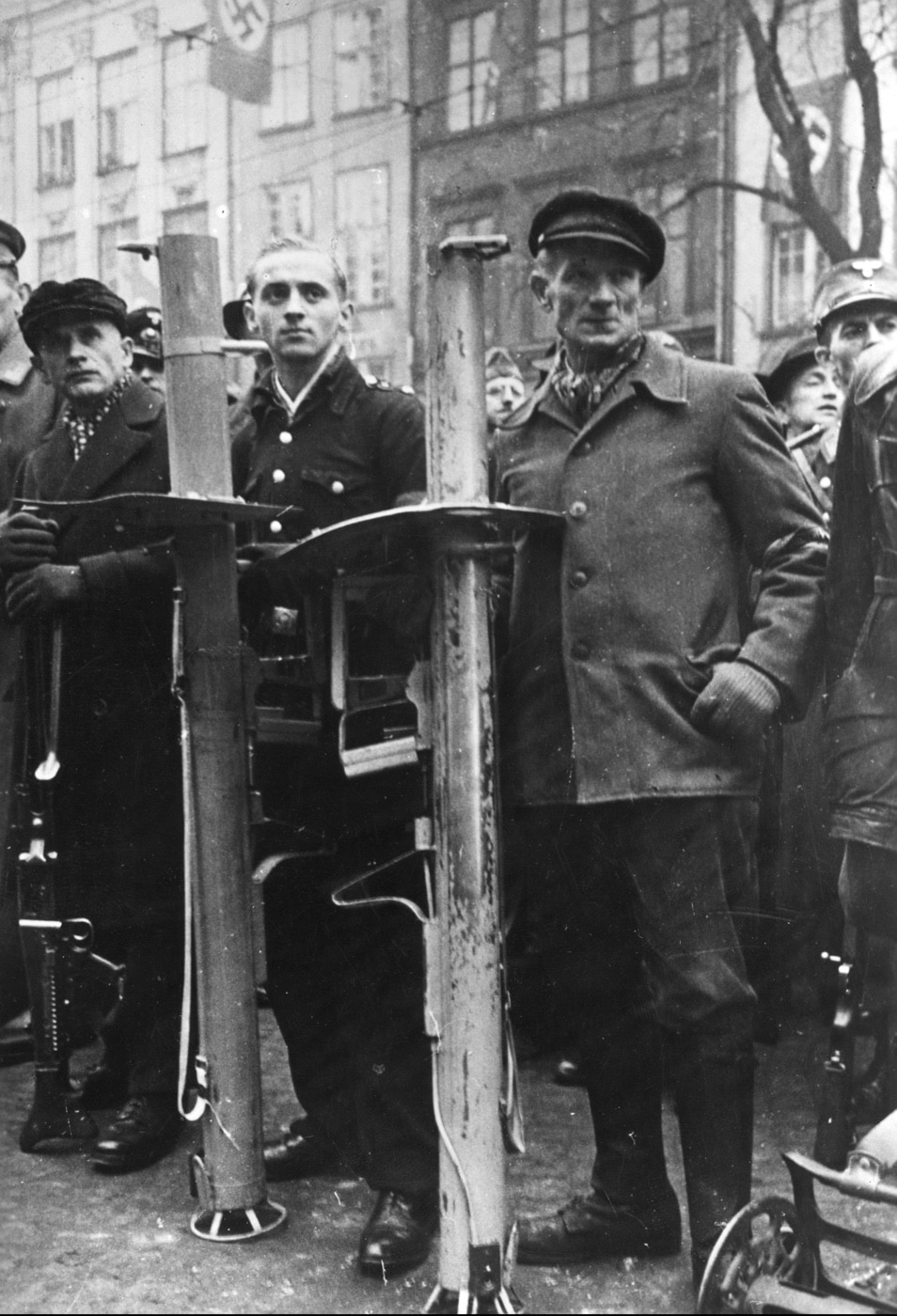
A Volkssturm unit in Berlin with Panzerschreck rocket launchers and a MG42 LMG. Note the overall lack of any military uniform. Image: Polish National Archives
The German militia contained very little storm, unless you count their impossible logistical challenges.
It is to be supplemented by submachine guns and light machine guns.
…it would be difficult to state exactly which small arms models the Volkssturm will use.
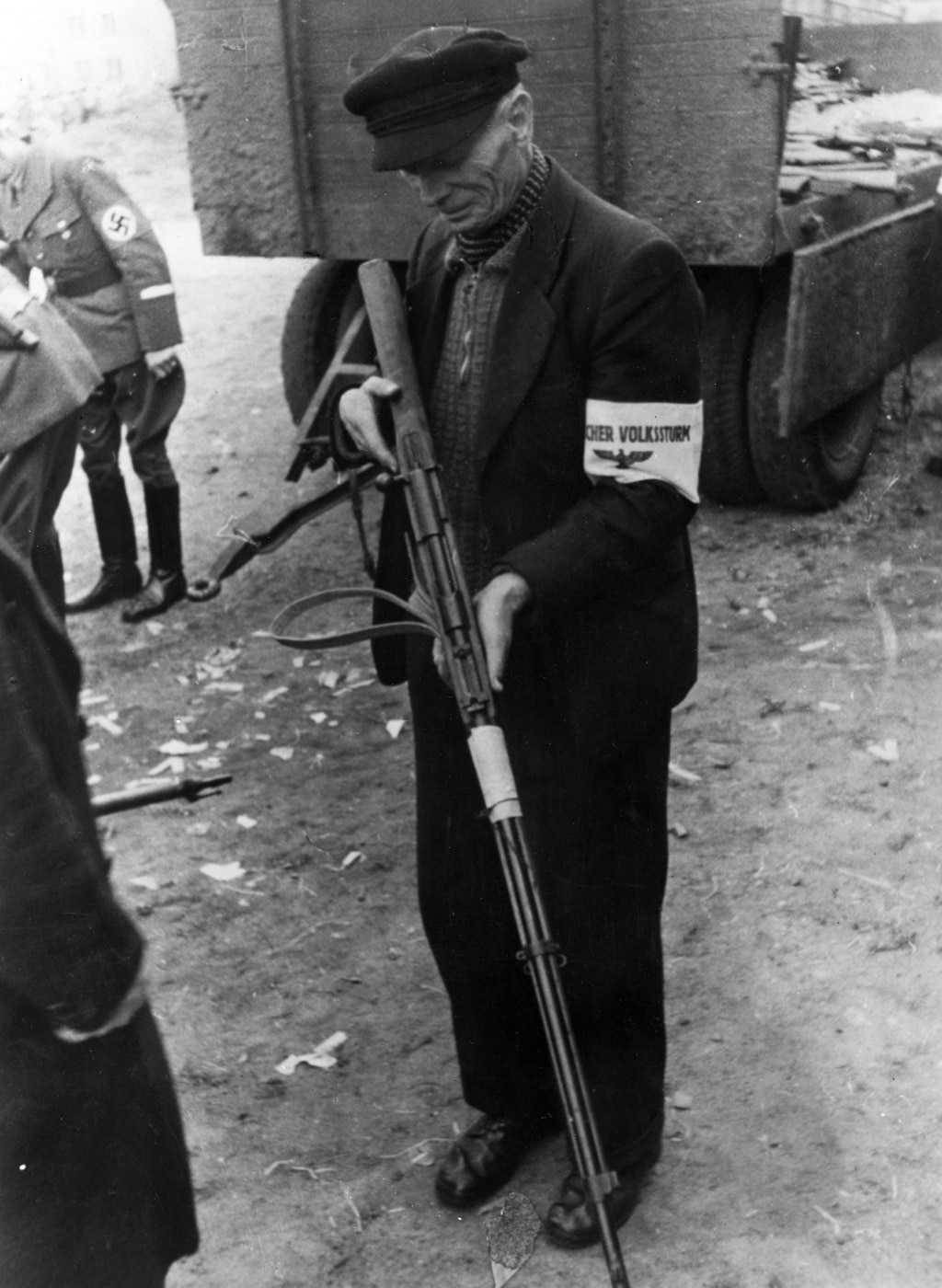
An elderly Volkssturm man looks over his newly issued Mannlicher M1888 rifle chambered for the 8x52mmR cartridge. Image: Polish National Archives
Other equipment includes egg hand grenades and potato-masher hand grenades.
At present any turnout of the Volkssturm is likely to present a rag-tag-and-bobtail appearance…
Uniforms of the Storm Troopers, Hitler Youth, and Party territorial leaders will be encountered.
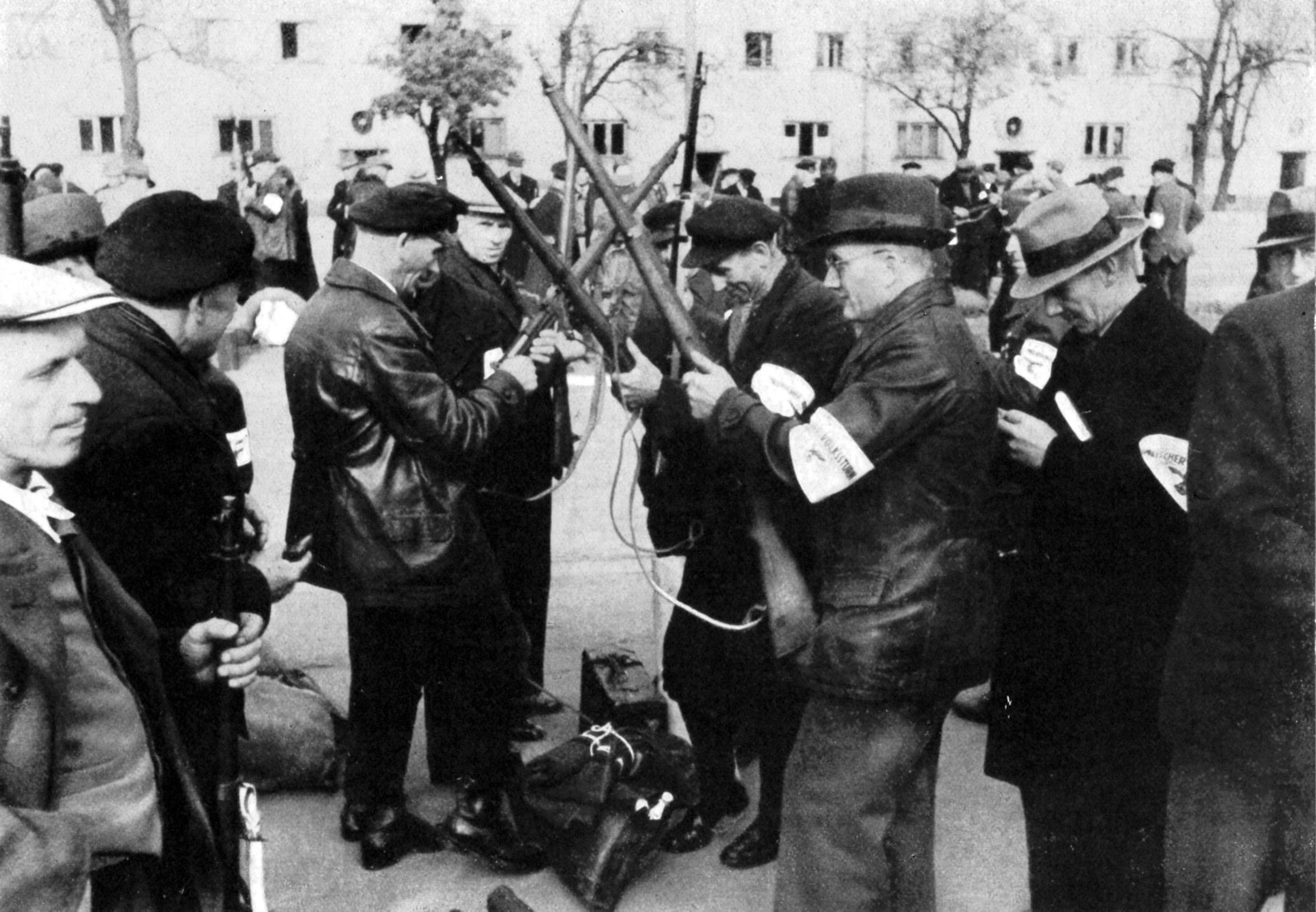
Members of the Volkssturm muster in the autumn of 1944. Few units had uniforms. Here, the issued rifles are World War I-vintage Gewehr 98 rifles. Image: NARA
Many men will simply wear civilian clothes.
Facing the British and Americans, the Volkssturm troops rarely fought to the last.
On the Eastern Front, the concept of total war was well understood by everyone particularly the civilians.
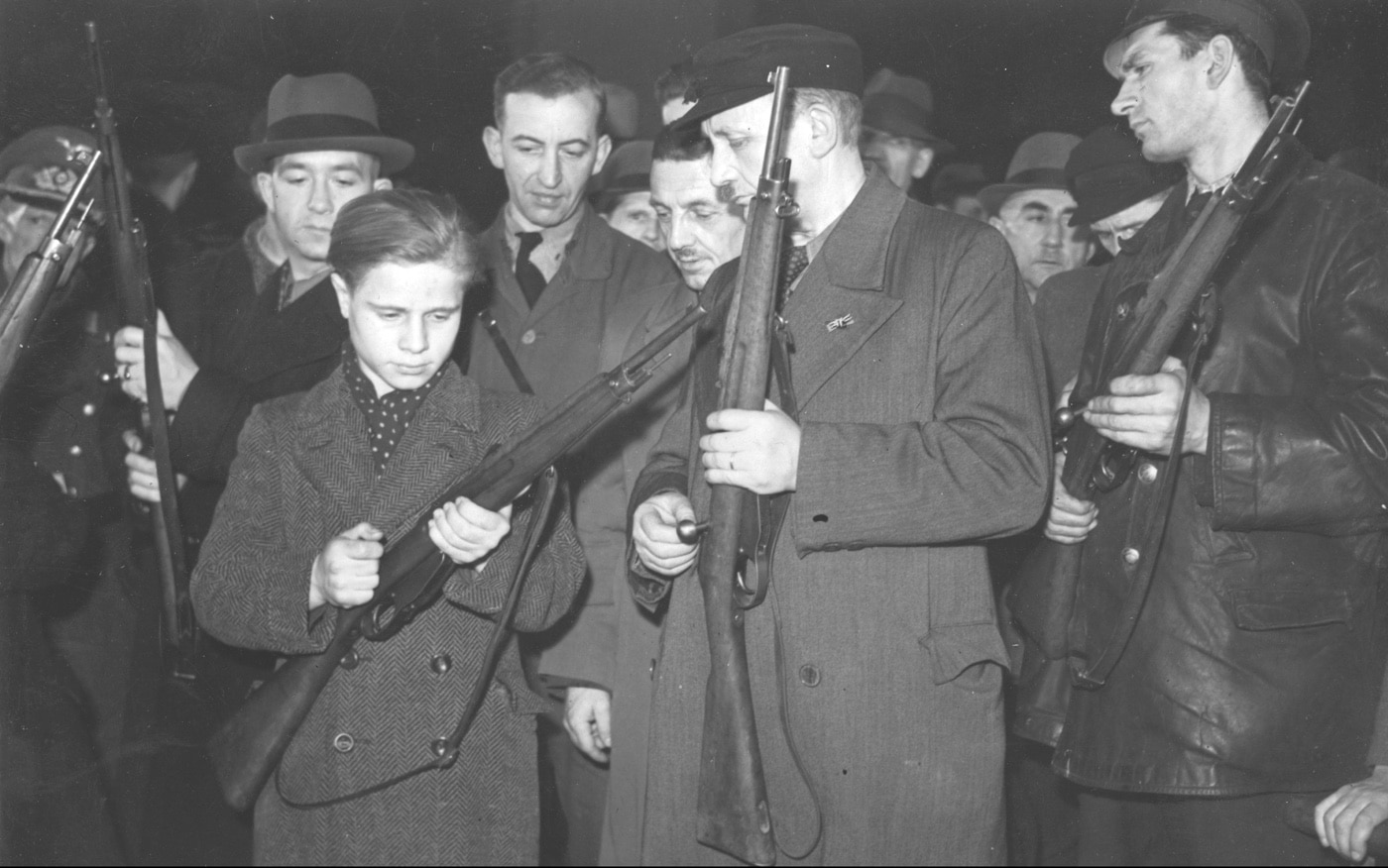
Volksturm boys and men look over their carbines. The Germans re-chambered some of these foreign carbines into 7.92x57mm Mauser. Image: Polish National Archives
The Volkssturm units for the most part vanished into thin air when the enemy approached.
In the East, things were quite different.
In spite of the much-discussed difficulties, in many places the Volkssturm acquitted themselves gallantly against the attacking Soviets.
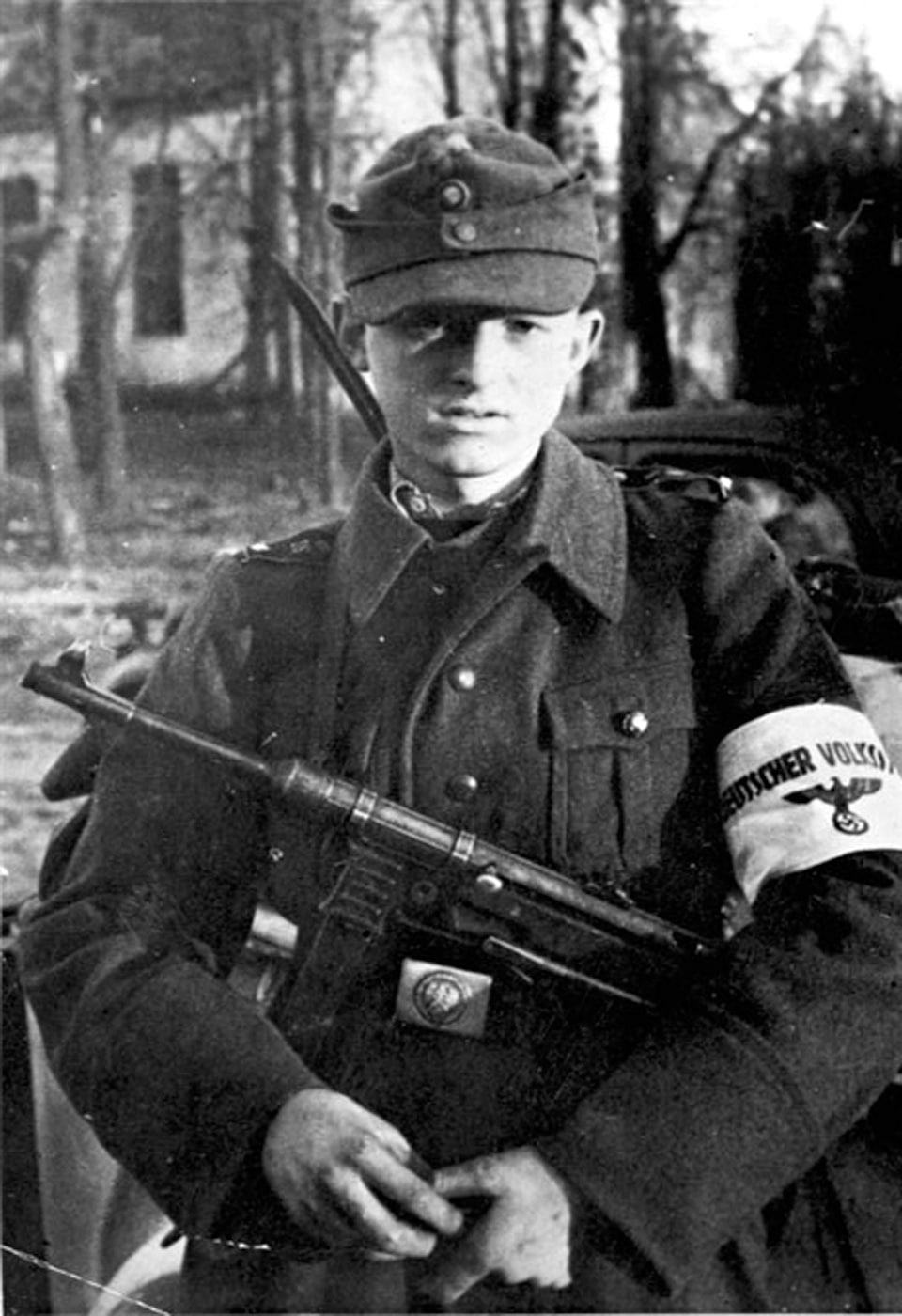
Teenagers in the Volkssturm were much more plentiful among the units in the East. This teenager has most of a uniform and carries aMP 40 submachine gun. Image: Author’s collection
This was particularly true in cities such as Oppeln, Brieg, Glogau, and Breslau.
Stoer approved the recommendation and thereafter the work of recruiting and training the battalion fell on Langkitschs shoulders.
The men who registered for the Volkssturm were interviewed next by the commanding officer.
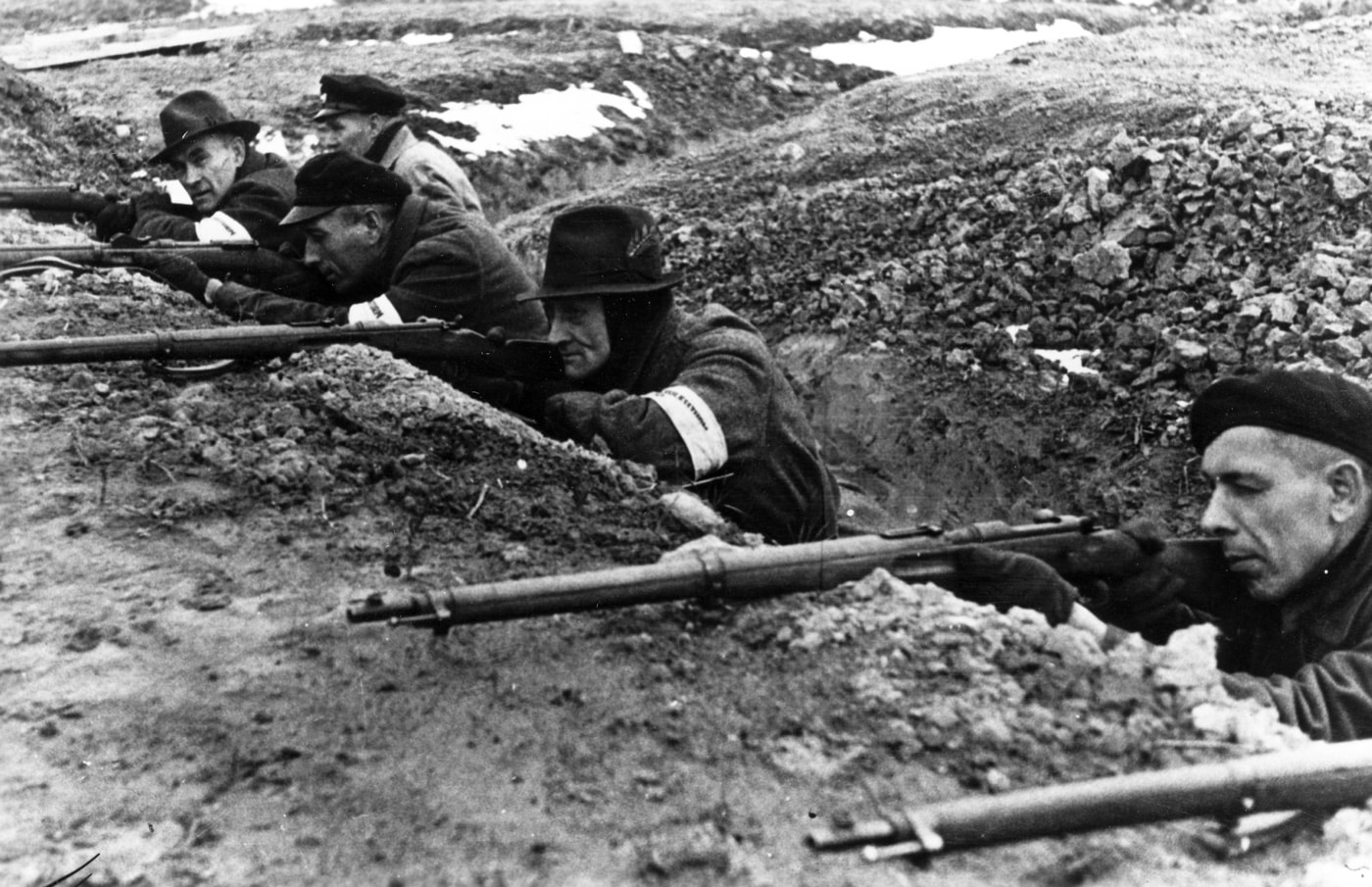
Rifle training was usually limited by available ammunition supplies — and rifle training was often the only training that the Volkssturm units received before being sent into action. Image: Polish National Archives
They were then given a medical examination.
From the results obtained, the Battalion CO made his selections.
He could select as many or as few as he saw fit.

Volkssturm anti-tank training using a derelictSoviet T-34/76 tank. A common tactic was to blind the crew with smoke grenades and attack the vehicle with explosives. Image: Polish National Archives
Originally it had been planned to form a Volkssturm Battalion Metzland with recruits from the rural country surround Metz.
Volunteers were also accepted from German citizens under 16 and over 60 years of age.
Training
The Metz recruits had one week of training before they became operational.
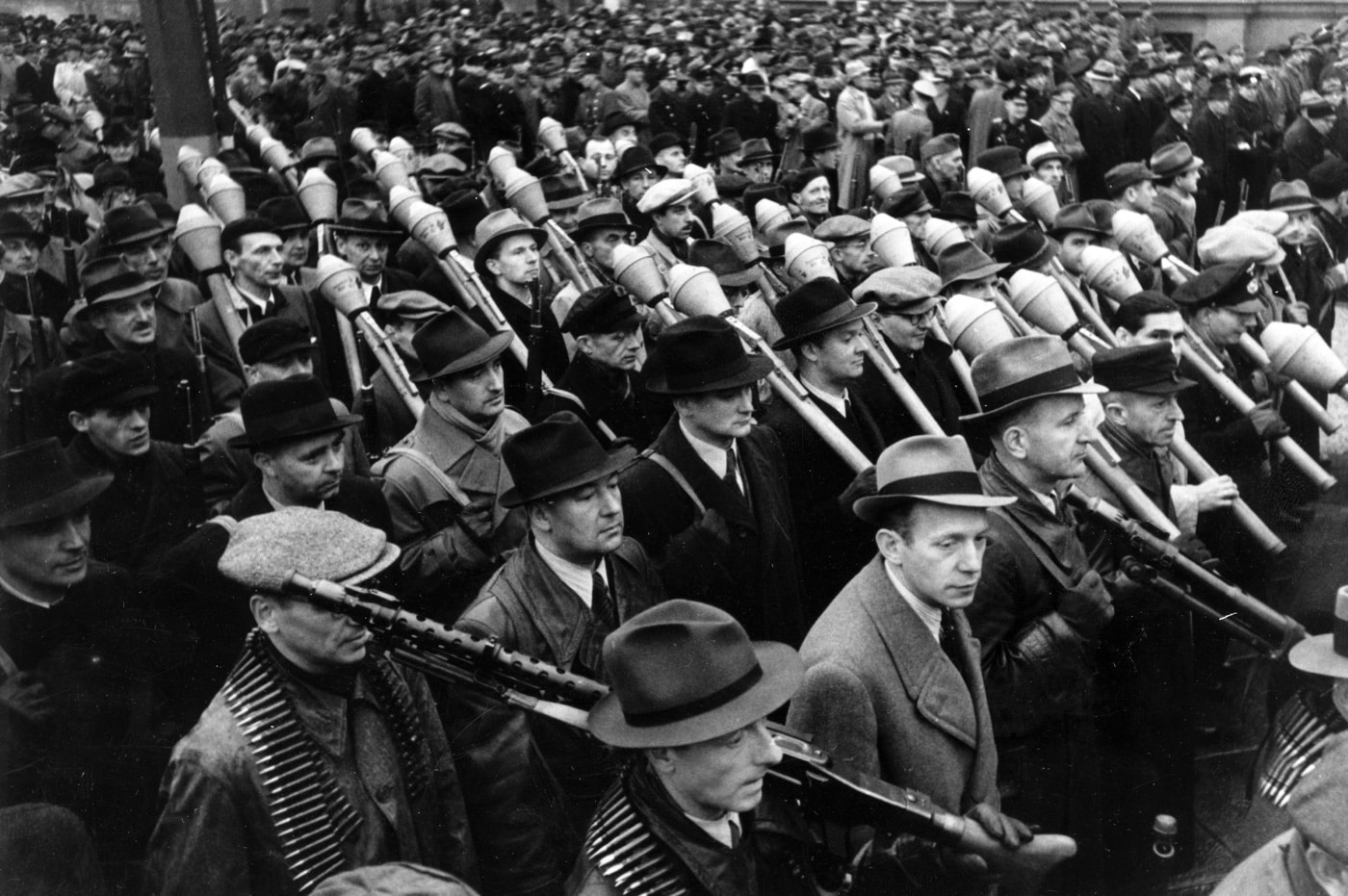
A well-equipped Volkssturm unit on parade in Berlin. Many in the Wehrmacht thought the equipment was wasted on untrained militia. Image: Polish National Archives
None of them were SA or SS men, but the majority were members of the Nazi Party.
No further training was provided.
Likewise, Langkitsch chose his company, platoon, and squad leaders based on military or para-military experience.
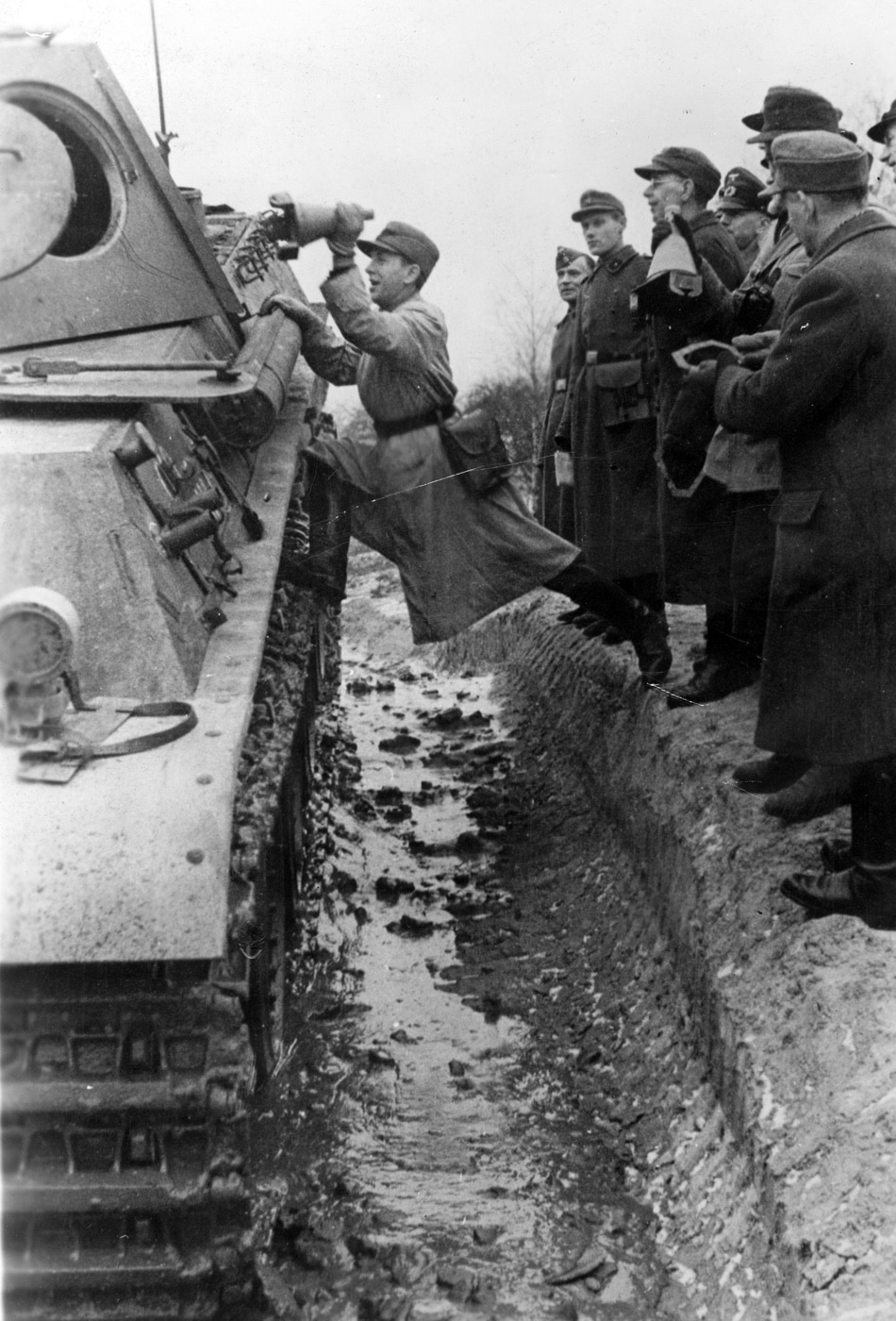
Demonstrating the use of the Hafthohlladung magnetic anti-tank mine to Volkssturm volunteers. The mine worked well in destroying the tank and the user, alike. Image: Polish National Archives
Pay and rations
The members of Volkssturm Metz were not paid by the state during the training period.
While they were training, they did not lose pay for being absent from their civilian work.
During the training period the men ate and slept at home.
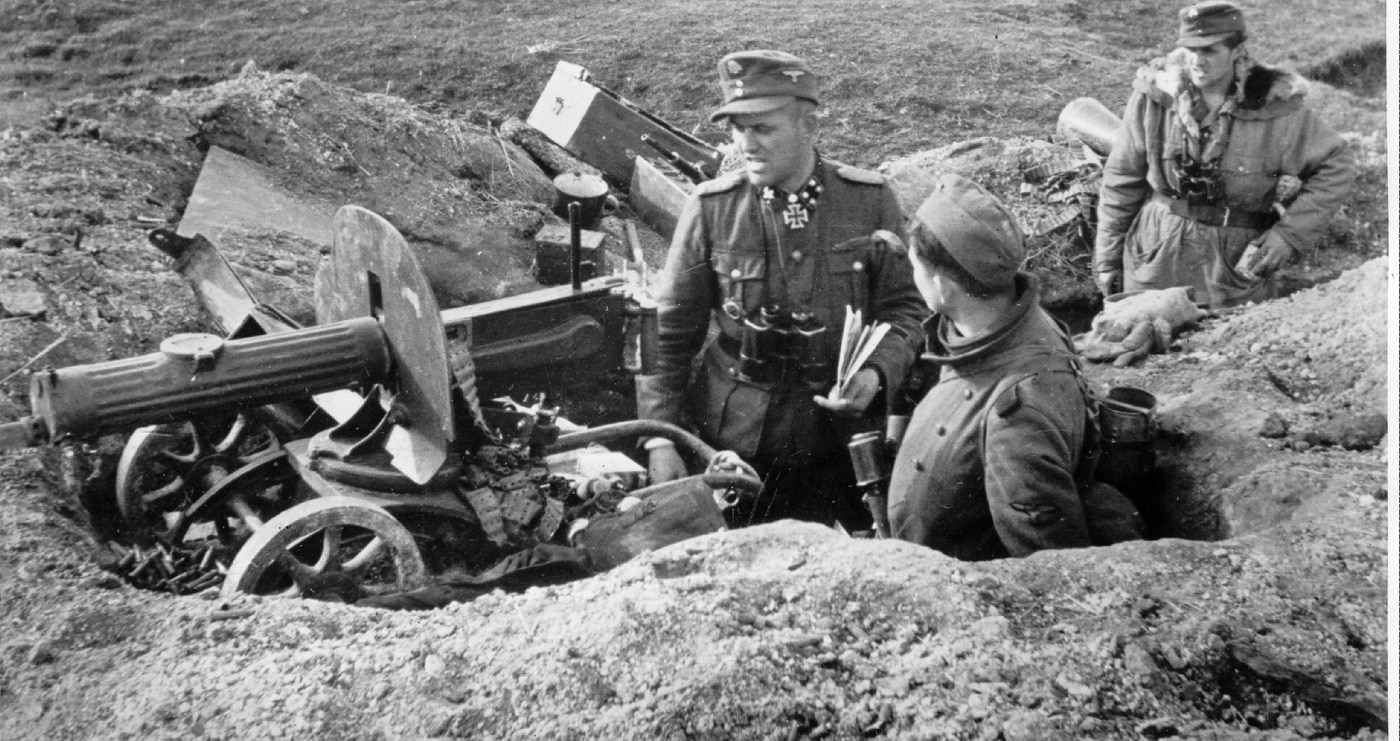
Volkssturm units in eastern Germany did a great deal of fighting against the Soviet Union troops. This position features a captured Maxim M1910, being inspected by an SS officer. Image: Author’s collection
When the Volkssturm became operational, they received food and pay from the German Army.
Age
The most numerous age group in the Volkssturm Metz was approximately 45 years.
Ammunition was ample for all weapons, except the Italian rifles.
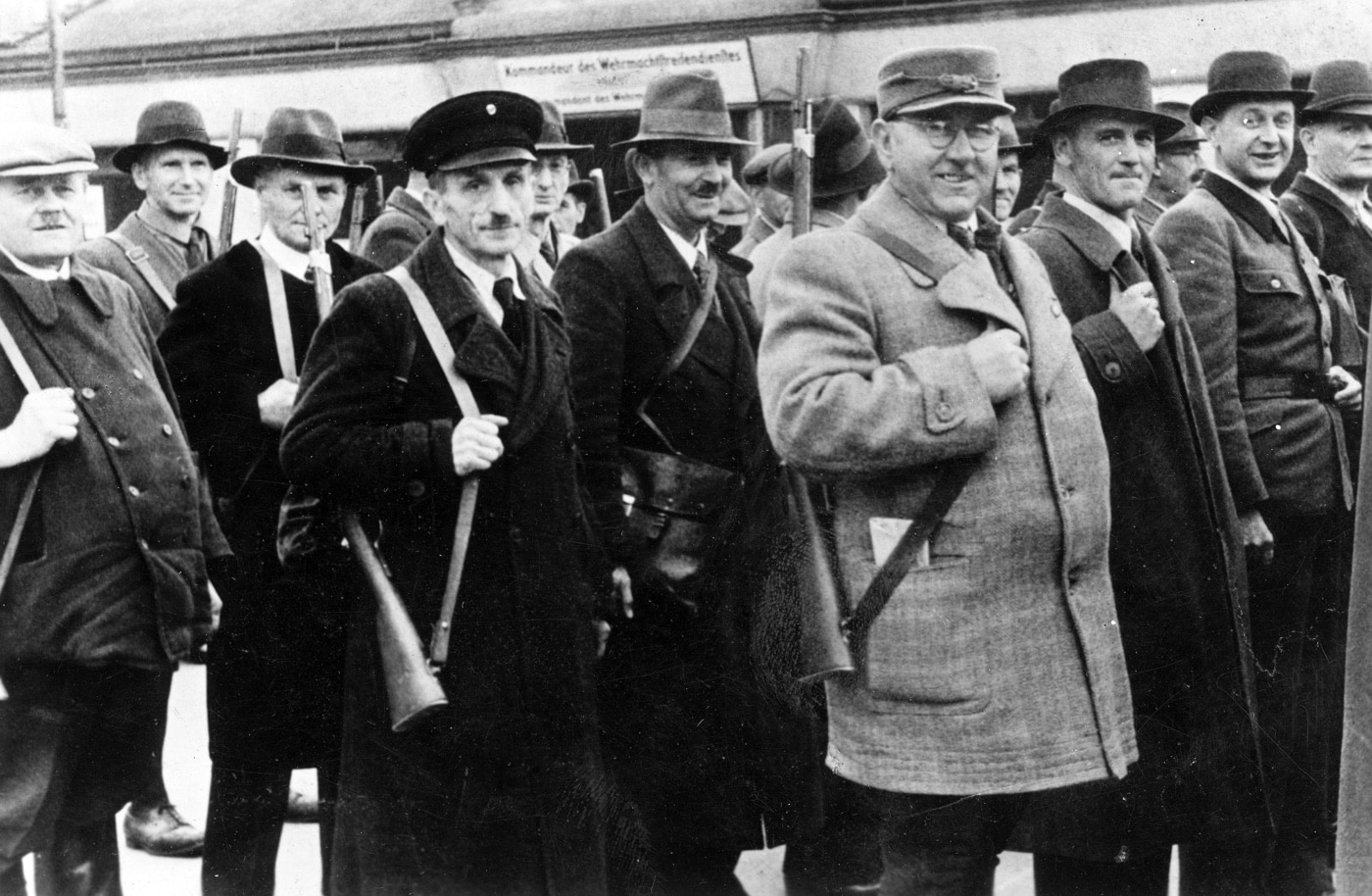
These Volkssturm men carry legitimate military antiques in the form of Fusil Gras mle 1874: a single-shot breechloader designed for the 11x59mmR Gras cartridge. Image: Polish National Archives
The 1stand 2ndCompanies had some fighting value since the personnel were former policemen who could handle rifles passably.
Their discipline was high.
This was due in part to the fact that their civilian occupations did not require the use of weapons.
The Wehrmacht could spare nothing.
This plan was also of little consequence.
Thus, the whole project of staging an armed levee en masse was doomed from the very outset.
Leadership and training were two of the other problems to be solved.
Among the men of the Volkssturm were many veterans of World War I.
To provide adequate training was a more difficult matter.
Occasionally, in towns with local garrisons, one or two instructors were provided by regular army units.
That was all the assistance the Wehrmacht could give because it had no men to spare.
Fear and necessity are fantastic motivators.
Some of them even had adequate motor transportation.




